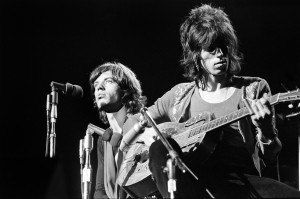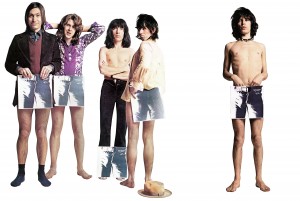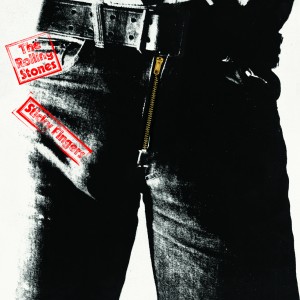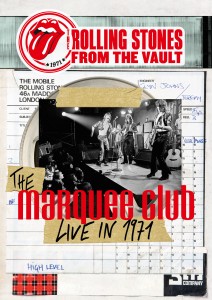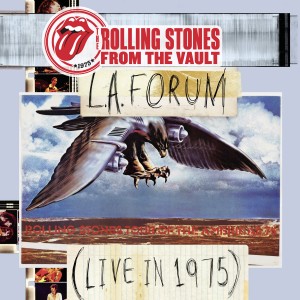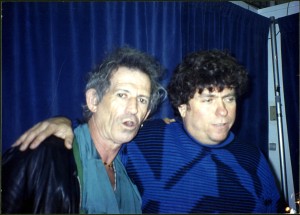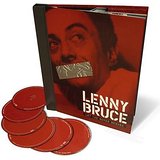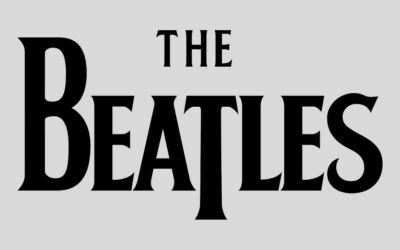By Harvey Kubernik c 2015
The Rolling Stones will kick off their new 15-city North American stadium, Zip Code tour in San Diego on May 24 at Petco Park. Concert stops are in
Columbus, Minneapolis, Dallas, Atlanta, Orlando, Nashville, Pittsburgh, Milwaukee, Kansas City, Raleigh, Indianapolis, Detroit and Buffalo before wrapping in Quebec on July 15 at Le Festival D’Été de Québec.
“We are excited to be back in North America playing stadiums this summer! We are looking forward to being back on stage and playing your favorite songs.” – Mick Jagger
“We love being out on the road and it is great to come back to North America! I can’t wait to get back on the stage!” – Keith Richards
The tour will also coincide with the Rolling Stones re-release of Sticky Fingers on May 26 in North America, and May 25 in the rest of the world, by Universal Music.
On April 23, 1971 Sticky Fingers was commercially issued. I bought it at Wallachs Music City in Hollywood. It featured artwork by Andy Warhol with its working zip on the front cover that is recreated in the Super Deluxe and Double Vinyl Deluxe Editions of the new package.
Sticky Fingers was produced by Jimmy Miller and showcased the song writing of Mick Jagger and Keith Richards, bass player Bill Wyman, the guitar work from Mick Taylor, and Charlie Watts’ mathematical drumming.
Jack Nitzsche’s piano work is heard on the track “Sister Morphine,” but I wished they spelled his last name correctly in the musician credits.
There are selections of previously unavailable material contained within the Deluxe and Super Deluxe formats. These include the alternative version of the chart-topping single ‘Brown Sugar’ featuring Eric Clapton; unreleased interpretations of “Bitch,” “Can’t You Hear Me Knocking” and “Dead Flowers”; an acoustic take on the anthemic “Wild Horses,” and five tracks recorded live at The Roundhouse in 1971 including “Honky Tonk Women” and “Midnight Rambler.”
The Super Deluxe edition will also house Get Yer Leeds Lungs Out! the 13-track audio recording of the Stones’ gig in Leeds in March 1971, shortly before their “exile” in France began. The set included “Brown Sugar,” “Bitch” and “Dead Flowers.”
There’s also a chance to view two numbers from the band’s famous Marquee Club show of March 26, 1971. Other features of the Super Deluxe Edition include a 120 page hardback book complete with real zip, featuring new liner notes and many rare and unseen photographs from the era plus a print, postcard set and more.
With the arrival of the Sticky Fingers 2015 edition, I asked three chroniclers and scholars on the Rolling Stones about it and when they first obtained their cherished original pressings some 44 years ago.
James Cushing: This was the first Stones studio LP created after the breakup of the Beatles, which is to say, after their favorite role-models became no longer immediately available. But I hear a funny White-Album vibe on Sticky Fingers, in the sense that each song represents a different genre. Take Side Two: it offers hard dance-rock, a slow Otis-type ballad, a Dylanesque folky thing (‘Sister Morphine’), a country-western number, and a string-infused Grand Gesture at the end. Five tunes, five genres — and the mixup on Side One is just as surprising. Sticky Fingers was also the first-ever release on Rolling Stones Records, the one with the tongue — and that fact makes the Beatles connection even more relevant, since the White Album was Apple’s debut LP release in 1968. So, the Stones may have been looking for musical variety in their presentation, not simply sexiness.
“I think of Sticky Fingers as The Mick Taylor Album because his lead playing is so stellar throughout (except ‘Sister Morphine’ where it’s Ry Cooder). His solos make the lesser songs like ‘Sway’ cohere, and he’s at his absolute best on ‘Can’t You Hear Me Knocking,’ another example of stealth-jazz at its best. I have Crusade, the Mayall Bluesbreakers LP Taylor did, and he plays very differently with the Stones.
“The Leeds live album (a very well recorded bootleg) [and now commercially out in 2015 with the new Sticky Fingers deluxe package], shows his playing brilliantly. As always, Charlie Watts wins MVP for driving the band as only a great drummer can… The concert occurred before the release of Sticky Fingers, so ‘Dead Flowers,’ ‘Bitch’ & ‘Brown Sugar’ are new to this audience — these songs sound sloppy-fresh and fierce, and the band sounds more excited about playing them than the older songs (‘Honky Tonk Women’ sounds phoned-in — however, ‘Midnight Rambler’ is longer and a lot more intense than on Ya-Yas, and Mick Taylor sounds especially heartbroken on ‘Love in Vain’).
“Jim Price, Bobby Keyes and Nicky Hopkins are auxiliary members, as they would be on the 1972 Exile tour, so the Stones are an eight-piece band here, pumping out a much richer, fuller soul sound than the Ya-Yas incarnation. I’m reminded of the Stax/Volt Norway TV taping, with Booker T & the MG’s with the Mar-Keys keeping it up behind Sam & Dave.
“A big question in rock seems to be: Are guitars sufficient? The answer seems to be, only at first. Think of all the bands that began with guitars-bass-drums and then added keys and/or horns as they ‘grew as musicians.’ The horns and piano here sound like an acknowledgement of the idea of The Soul Revue, which their 1972 Exile show certainly was.
“I bought The LP right when it came out, May 1971 at Discount Records in Westwood, and played it over & over as I was getting ready to graduate
from bad old Harvard School… Rolling Stone Magazine gave it a mixed review.”
Kenneth Kubernik: I bought the album at Aaron’s Records on Melrose Avenue. Like Jordan Spieth on his run up to the Masters, the Stones were on a creative roll when Sticky Fingers surfaced in April, ’71. Beggars, Bleed, Ya-Yas, they were running the table with the cutthroat gleam of white punks on some serious dope. The new album was an order of magnitude greater, a coruscating mosaic of all their variegated influences: alley cat blues, grand old country pickin’, the nitro blast of rock ‘n’ roll and even a jigger of jazz (thank you, Charlie!).
“The songs, a libretto of salacious funk, celebrated a rogue’s gallery of sexual buccaneers prowling and preying on the desperate and dissipated. It’s a harrowing descent but performed with such jubilance, with such attention to musical detail (i.e. Paul Buckmaster’s wall of strings enveloping Taylor’s valiant, anguished leads and Hopkins’ sanctifying triplets on ‘Sway’), that it startles and stirs in equal measure, like a pack of wolves baying at a luminous night.”
Daniel Weizmann: In the same way “Like a Rolling Stone” marked the spiritual launch of the Sixties, Sticky Fingers is the first rock album to have a totally seventies sensibility–decadent, insular, and cynical in a whole new way…the knowing, street-smart pessimism that would become common parlance for the oncoming decade.
Over a year before Ziggy Stardust, they were already singing about satin shoes, plastic boots, cocaine eyes and speed-freak jive. Even the album cover vibes a comic sarcasm that is way ahead of its time — packaged lust and zippers to nowhere. It could have been a punk album cover 8 years later. Part of this new tone–and part of the way the seventies came to define itself–comes from the burst bubble of counterculture dreams. ‘Love is the way they say is really strutting out,’ Mick sings on ‘Sway,’ but from his worn and torn bed of sorrow, he himself doesn’t sound convinced. Brian Jones was dead, the Beatles were gone, the Utopian Decade was finished, and with Sticky Fingers, the Stones let you know they intended to survive, to ride out the moonlit mile without illusions.
“My older brother Moshe bought a copy of Sticky Fingers at Platterpuss Records on Sunset Boulevard. It seemed contraband, almost like a Playboy Mag or a ‘lid of grass’ — like something you’d instinctively hide from your parents. At the time I couldn’t figure out why, but now I get it. This was music against innocence.”
Need more Rolling Stones’ audio and visual products this summer?
I suggest the upcoming and long sought-after, rare club performance from them in 1971 filmed at London’s iconic Marquee Club will finally see the light of day, after almost two decades of being stored away in an attic. The Rolling Stones From The Vault: The Marquee-Live in 1971 will be released on DVD in four formats and on iTunes via Eagle Rock Entertainment on June 23, 2015.
Also highly recommended are two more Stones DVD’s that were November 2014 delights from Eagle Rock Entertainment.
The Rolling Stones From The Vault: Hampton Coliseum-Live in 1981 delivers a full-length 2 1/2 hour concert, featuring “Under My Thumb,” “Let’s Spend The Night Together,” “Shattered,” “Beast Of Burden,” “Tumbling Dice,” “Miss You,” “Brown Sugar,” “Jumping Jack Flash,” “(I Can’t Get No) Satisfaction,” and many more. The show on December 18th, which was also Keith Richards’ birthday, was the first ever music concert to be broadcast on television as a pay-per-view event.
And, please own the essential The Rolling Stones From The Vault: L.A. Forum-Live in 1975 which clocks in at 2 ½ hours, and features “Honky Tonk Women,” “Gimme Shelter,” “You Can’t Always Get What You Want,” “Tumbling Dice,” “Brown Sugar,” “Midnight Rambler,” “Jumpin’ Jack Flash,” and “Sympathy For The Devil,” to name a few. The Rolling Stones’ Tour Of The Americas ‘75 was the group’s first trek with new guitarist Ronnie Wood. The band settled into the L.A. Forum for a five-night stint from July 9th to 13th.
The L.A. Forum-1975 film features the show from July 12th.
I attended all five concerts.
Still can’t get enough of the Stones’ hot stuff? There are two books on the outfit that should be purchased and devoured.
One is the 572-page volume published by BackBeat Books on the band’s equipment All the Stones’ Instruments from Stage to Studio by Andy Babiuk and Greg Prevost. It’s the first book to historically document all of the Rolling Stones’ musical gear on their way to superstardom.
Author Andy Babiuk was given exclusive access to The Rolling Stone’s musical equipment, and he has masterfully compiled the history of the band through the instruments they used for more than fifty years.
In 2001, he wrote the best-selling book Beatles Gear: All the Fab Four’s Instruments from Stage to Studio, and Rolling Stones Gear is a worthy follower.
The book boasts hundreds of photographs and rare images, many of which have never been published, including the Rolling Stones’ actual guitars and gear, specially photographed for this book and to be seen here for the first time. Virtually everyone – musicians, Stones fans, and casual readers alike – will learn amazing new facts about the band from their monumental fifty-year existence.
In late 2014, Taschen published their “SUMO” Collector’s authorized Rolling Stones book limited edition signed by Mick Jagger, Keith Richard, Charlie Watts and Ronnie Wood.
It’s produced in collaboration with the band. 500 pages of photos by the likes of Guy Webster, David Bailey and Gered Mankowitz, plus text, featuring a foreword by President Bill Clinton, and three essays from David Dalton, Waldemar Januszczak, and Luc Sante. The volume is edited by Reuel Golden. Information: www.taschen.com
(Harvey Kubernik has been a music journalist for over 42 years and is the author of 8 books, including This Is Rebel Music (2002) and Hollywood Shack Job: Rock Music in Film and on Your Screen (2004), published by the University of New Mexico Press.
In 2009 Kubernik wrote the critically acclaimed Canyon of Dreams: The Magic and the Music of Laurel Canyon, published by Sterling, a division of Barnes & Noble. In summer 2012, the title was published in a paperback edition.
With his brother Kenneth, Harvey co-authored the highly regarded A Perfect Haze: The Illustrated History of the Monterey International Pop Festival, published in 2011 by Santa Monica Press.
During April 2014, Harvey’s Kubernik’s Turn Up the Radio! Rock, Pop, and Roll in Los Angeles 1956–1972 was published by Santa Monica Press.
Harvey and Kenneth Kubernik wrote the text for photographer Guy Webster’s first book for Insight Editions published in November 2014. Big Shots: Rock Legends & Hollywood Icons: Through the Lens of Guy Webster. Introduction by Brian Wilson).
During 2014, BackBeat Books in the U.S. and Omnibus in the U.K. published Harvey Kubernik’s book on Leonard Cohen, Everybody Knows.
In autumn of 2015, BackBeat Books in the U.S. and Omnibus in the U.K will both publish Harvey’s book on Neil Young, Heart of Gold).


